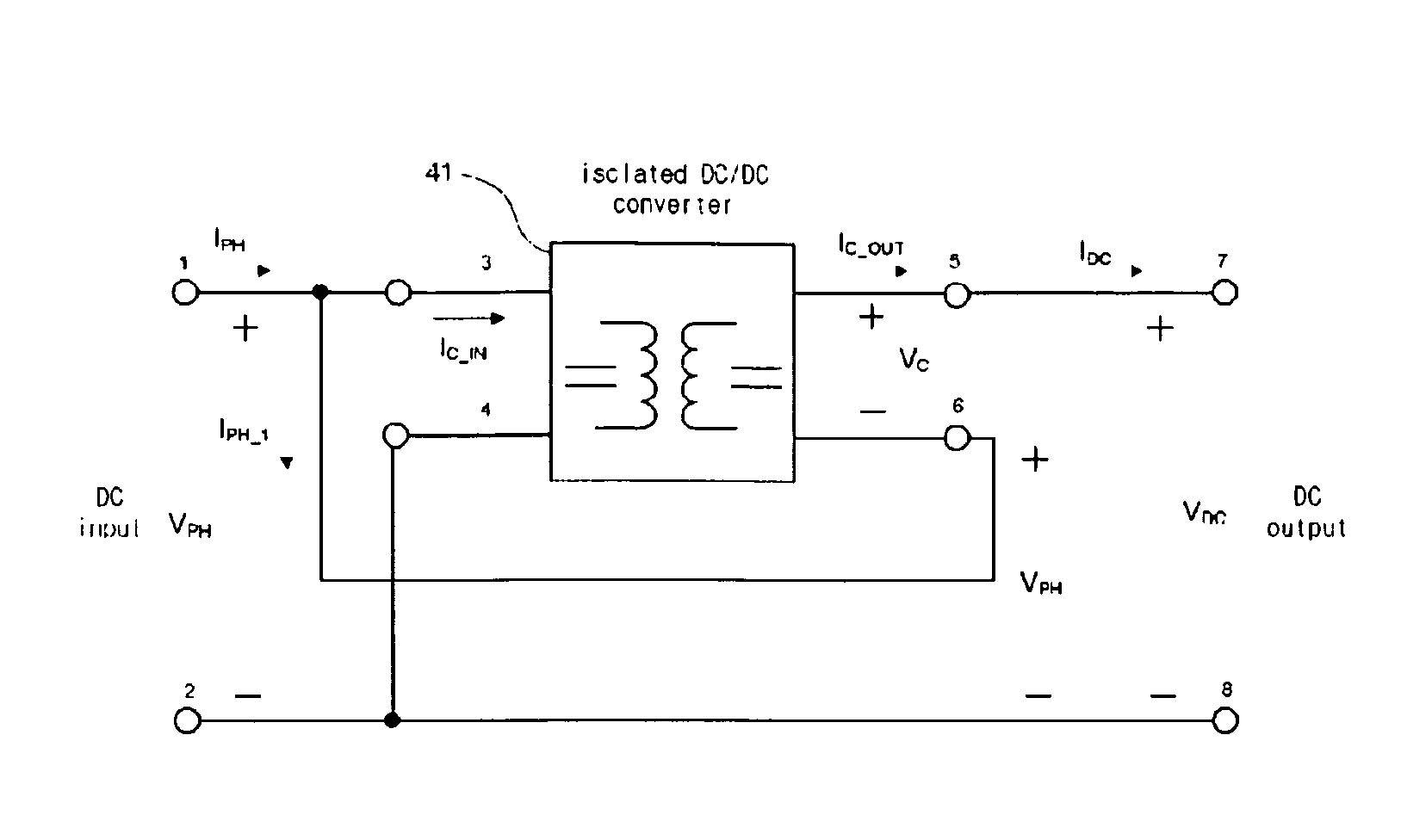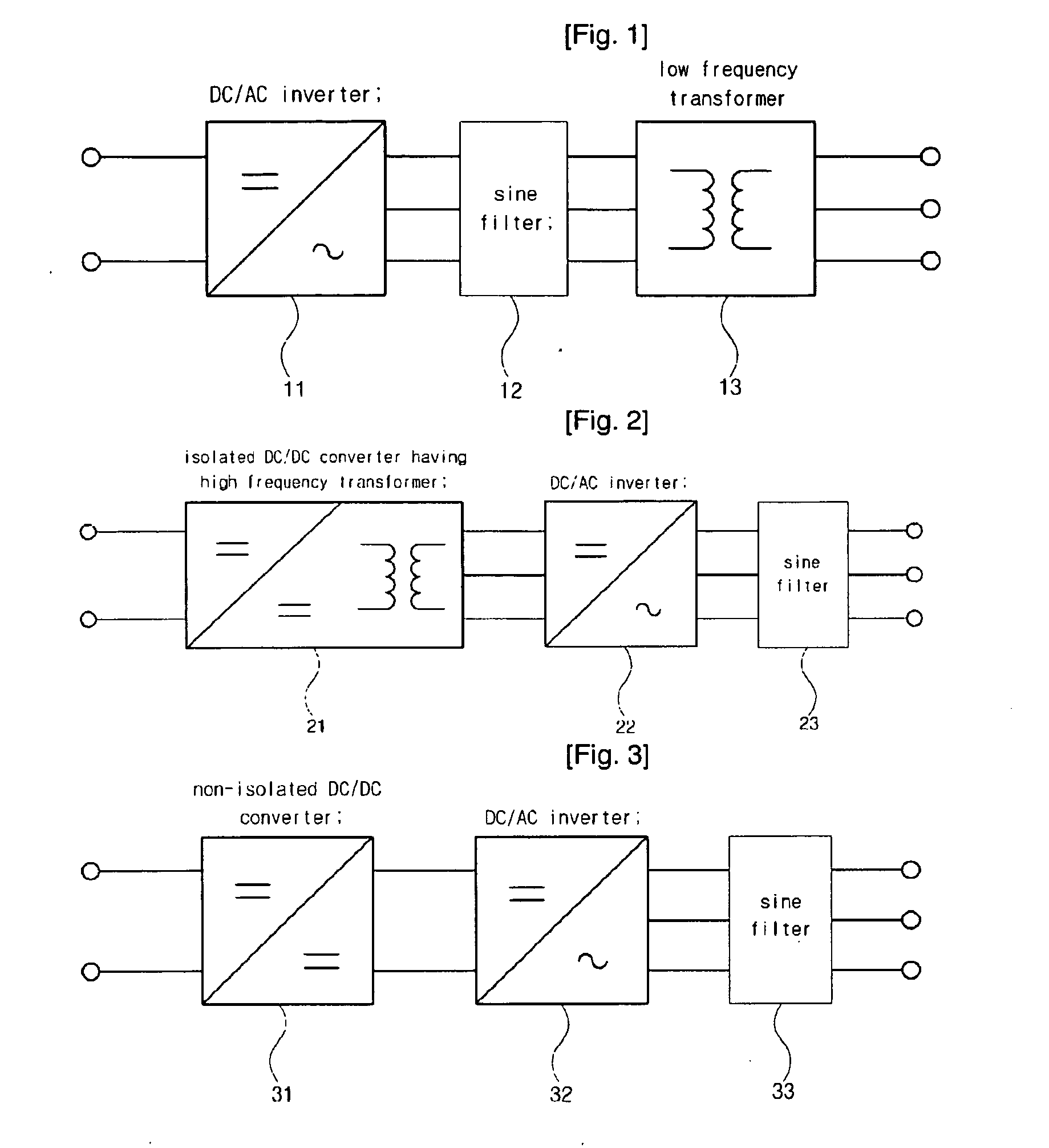Photovoltaic power conditioning system and method
a power conditioning system and photovoltaic technology, applied in photovoltaic energy generation, dc-dc conversion, transportation and packaging, etc., can solve the problems of reducing affecting the efficiency of the system, so as to reduce the required power capacity of the system, reduce the rated current of the inverter, and reduce the capacity of the converter.
- Summary
- Abstract
- Description
- Claims
- Application Information
AI Technical Summary
Benefits of technology
Problems solved by technology
Method used
Image
Examples
Embodiment Construction
[0040]Embodiments of a photovoltaic power conditioning system and method according to the present invention will now be described in detail with reference to the accompanying drawings.
[0041]The photovoltaic power conditioning system according to the present invention employs a topology allowing the system to be responsible for part of the output capacity, thereby significantly reducing the required capacity and increasing the system efficiency, so that the system can be applied to small and large-capacity photovoltaic power generation.
[0042]FIG. 4 is a graph showing characteristic curves of a general solar cell according to temperature and irradiation level.
[0043]The solar cell can be modeled by Equations 1 to 3.
I=ILG-Ios{exp[qAkTK(V+IRs)]-1}-V+IRsRsh<MathFigure1>Ios=Ior(TKTr)3exp[qEGOBk(1Tr-1TK)]<MathFigure2>ILG=ISC-KI(T-25)λ1000<MathFigure3>
[0044]The following are the definitions of symbols in Equations 1 to 3.
[0045]IOS: cell reverse saturation current
[0046]T: ce...
PUM
 Login to View More
Login to View More Abstract
Description
Claims
Application Information
 Login to View More
Login to View More - R&D
- Intellectual Property
- Life Sciences
- Materials
- Tech Scout
- Unparalleled Data Quality
- Higher Quality Content
- 60% Fewer Hallucinations
Browse by: Latest US Patents, China's latest patents, Technical Efficacy Thesaurus, Application Domain, Technology Topic, Popular Technical Reports.
© 2025 PatSnap. All rights reserved.Legal|Privacy policy|Modern Slavery Act Transparency Statement|Sitemap|About US| Contact US: help@patsnap.com



